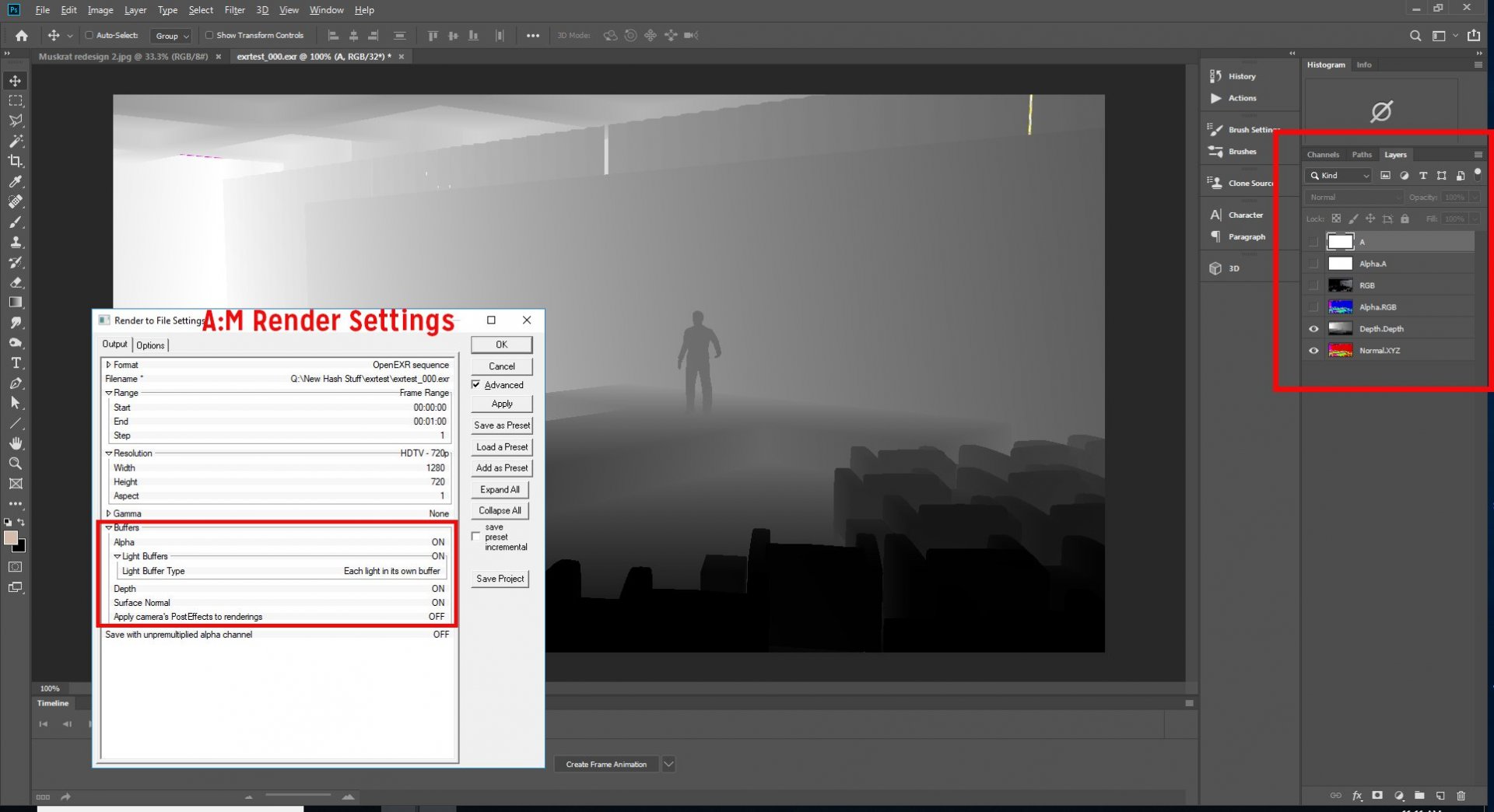-
Posts
6,560 -
Joined
-
Last visited
-
Days Won
55
Content Type
Profiles
Forums
Events
Posts posted by John Bigboote
-
-
It's bizarre. A whole new way of thinking. Very additive-subtractive. Watch this fried-egg modeling example... I guess once you get a feel of the controller things are pretty precise altho it looks like it is more haphazard... I just wish there was a way to tie A:M into this. Like A:M, it is an island unto itself.
-
New as of Feb 14, 2020 is Media Molecule's Dreams... which is hard to describe... it is a game-engine... it is an illustration software... it is a modeller, animation and world-builder... all 'contained' within the confines of your Sony Playstation 4 (I don't have a PS4- but now I want one.) Cost is $40USD for the software... the PS4 can be obtained for $400 new or much-much less for the thrifty buyer ( I saw one lightly used with a lot of extra components on my local Facebook Marketplace for $200.
The 'upsides' are many... look at that demo-reel... want to make beautiful worldly animations quickly? Want to avoid 'coding'? Want something that will endlessly entertain? Want to collaborate on projects? Dreams is all that and more. 'Downsides' for us A:Mers... no .obj import or any other 3D softwares files or formats for that matter. Dreams 'lives' in the confines of the PS4(although I believe you can export animations/videos as they had to-to create these samples...) Also- a keyboard can be used as an input device for text, but a mouse...no. Why use a mouse when you have the PS4 multi-levered controller...?
The interactivity game-engine is basically everything Playstationso it is robust... NOT a takeover product that will obsolete the Unreal, Unity or Godot engines. There seems to be no 'monification' which will hinder it's popularity. Instead of coding you have 'wiring' which is another term for node-based... and it looks like it gets a little deep to do simple things- but hey- KIDS are doing it!
From what I can tell, you model or 'sculpt' by using primitives additively and procedurally. Sounds crude... but LOOK at the stuff they are making. ALSO- file sizes are remarkably LOW... in the sub-megabyte range for an entire multi-level project.
Could this be the way of the future?
See more at Sony.com they feature their new stuff on that site and right now- it is new.
https://www.mediamolecule.com/
-
I'll start another thread as this is a breakaway from Godot... anyone been following the emergence of Media Molecule's DREAMs software which is contained on the Sony Playstation 4?
-
I figured... thanks Rob- 32 it is!
-
It has been a while since I've posted any fun stuff I've made with A:M... I use Element3D and C4D more and more these days... but a client wanted this animated globe with photos being stuck to it by pins and thinking how to rig it up in either of those 2 apps gave me 'the fits'. This simply uses 'orient like' and 'translate to' constraints for the photos and pins to get them to rotate and stay in place on the globe as I spin it. All moving elements in A:M... text and post was done in AE.
Funny thing on this job... the client- a young woman(not that that matters) did not understand why I needed to spin the globe at all. Can't you get India, China, Austria, Portugal and Mexico all in the same shot on a globe? I asked if I can flatten the map... no- it needs to be a GLOBE. Geography! I asked her to look at a globe if she has one... no. At home maybe? No. Google Earth? No. I had to render it out so she could have her 'ohhh' moment.
Weirdness... After making a globe in Element3D and then the same in A:M using spherical decal placement (easy!) I was disappointed to notice the horizontal lines have a bit of distortion that looks inaccurate in A:M... you can see the wobble to the lines in the animation- primarily in the oceans. Wondering what that is all about... I used a sphere with 8 subdivisions... I will try a higher number and see if that fixes and report back.
-
Why... THAT'S ME!!! Except I prefer my Rich and Rare whiskey... found on the bottom shelf at your local Wallmarts.
-
This is a fantastic collection! Way to go, Hashers!
-
CRAZY-COOL!
-
Here it is- half a year later... I was trying EXRs again and again for one reason or another was using the regular renderer... glad I found this thread!
-
Hey Rob- responding to your 'pre-roll' tip... above. I have been revisiting A:M and some of my models- and as you may remember I do a lot of work and research with A:M hair feature, trying to push it to it's limits. I have not had any troubles with the pre-roll feature and find it is quite a nice part of A:M's toolset... another feature that the other apps I have toyed with do not consider to include. I find whether you do your pre-roll before or after the zero frame the calculation times are similar. I don't want the programmers to think this is broken feature as I use it quite regularly and feel it works as advertised.
For those who may wonder... what does pre-roll do? On the model in the image attached I have 2 types of hair. 1- the short bangs which are groomed in A:M's groom mode and 2- the long flowy hair that falls behind the head and shoulders. For the long hair, if I were to just start rendering on frame 0-forward, the hair would be sticking straight out from the patches normals, kind of like the effect you get at a science fair when you touch the electric ball that sends static electricity thru your body and makes your hair stand on end. So- a period of a couple seconds is needed to let the hair fall according to the gravity settings and its mass settings, and if it falls over something and collision-detection is activated... it 'should' be affected by the geometry and not pass thru.
-
Cool! I think I may have helped you out with that pillar, which can be seen on Sketchfab https://sketchfab.com/3d-models/pillar2-1ee0e4c05f834812981e0aaa73c26804
Funny, I put all kinds of crazy stuff on Sketchfab and that pillar of all things gets the most likes and downloads!
A cool Sketchfab feature I employed on this model was the addition of a soundfile, which as you zoom-in closer to the model the audio gets louder. A big ATTABOY to the 1st person who can tell me the name of the band who made the music I used... and the album/song... I'll just sit here and wait...
-
I AM ENTERED!
-
Congratulations to the WINNERS, Dan-Steve-Charles!
and as always to Rob for the organization, medal creation, and getting dressed in his 'Sunday-go-to-meetin' suit for the 'scratch-off' prizes video... LOVE the production value!
I hope to be able to participate in the next contest... so let the trash-tawkin' begin!
-
Is'nt there a 'like' button here? Anyways... like!
-
 1
1
-
-
Wow- coming in late on this one... I coiuld never really get displacement to work so I will need to read your technique, Rob. Very cool!
-
Try a render without SSS on... if you still have the glitches try a render without SSS and the AO. Also- if you are using multipass, try the standard render- and vice versa.
-
ALSO- are you using a 'render as lines' group? I'll bet if you get rid of the render-as-lines group the dark-rendered 5-pointers will render right.
-
Hi Shelton- Nice model! Which AO feature are you using? (A:M has 3 that I know of...)
-A:M's AO feature which is pretty slow to calculate.
-A:M's GPU aka 'Screen Space Ambiant Occlusion'-or SSAO, renders swiftly but is a faked effect which works nicely.
-FastAO which is a 3rd party plug-in that may have been outdated by SSAO- renders swiftly but is a faked effect which works nicely.
-
48 minutes ago, robcat2075 said:
I'll note that "Build Composite" in A:M will create a composite project that lets you manipulate all the shadow and light buffers in A:M if you are inclined to do so.
I see that- it does a pretty good job automatically... you just lose a degree of- control.
-
ProRes? Trying to figure-out how Apple ProRes is involved... I see the text file as a layer in AE, but reading it is gobbleddy-gook to me- so I won't mess with it. I have my light buffers and specularity and shadows buffers now and playing... fun! That ProEXR is the catch!
-
Too bad there is not a way to add A:M's SSAO into the mix as a buffer, I know you can add it by rendering a separate image file with SSAO on and SSAO effect only activated- perhaps this would make a nice feature request.
-
Yes- I get the text file... I updated my entry from above- I had discovered that I was using A:M's normal renderer and when I used MULTIPASS things started to go better with exr's... I am seeing all the buffers now... there is almost TOO MANY which is powerfull stuff!
-
Then I searched our AM forum and saw Rodney's link to this:
https://sourceforge.net/projects/mrviewer/
EDIT- Major breakthru... I was rendering with the regular A:M renderer... then I tried MULTIPASS(x9) and things started working better!
-
Here is an exr rendered in A:M and opened in Photoshop CC with EXR-IO importer. It gives me an 'A' layer- which is all white... an Alpha.A layer-which is all white... the RGB layer which is the normally rendered frame... an alpha.RGB layer- which is quite colorful but I can't see a use for it... a Depth.Depth layer which is all white but I can get the info by playing with exposure/levels filters... and a Normal.XYZ filter which I can't see a use for.
MISSING would be the light buffers(I tried it in all 3 settings- 1) Single 2) Light Buffers objects 3) Each light in its own buffer. The exr file imported back into A:M shows the same way though. SHOULD'NT the exr file have another buffer(image/layer) for each light? Is this broken?
THEN- I went and googled 'exr and after effects' and found this(attached Vimeo link) for free plug-in ProEXR... but after installing and watching the 'how to' video... still the same 4 channels are all I see, no light buffers.












Dreams on the PS4
in Game Development
Posted
No. VR is planned for the next release. Best description is it is a Playstation game... that makes Playstation games. Here is a good discussion and demo: